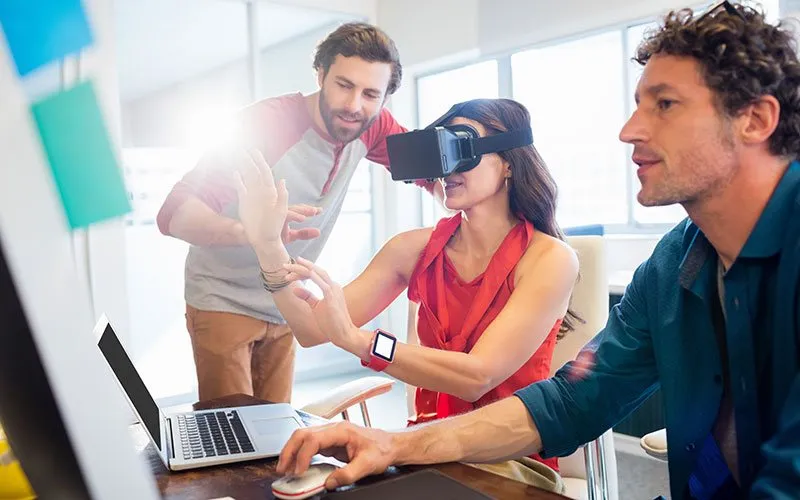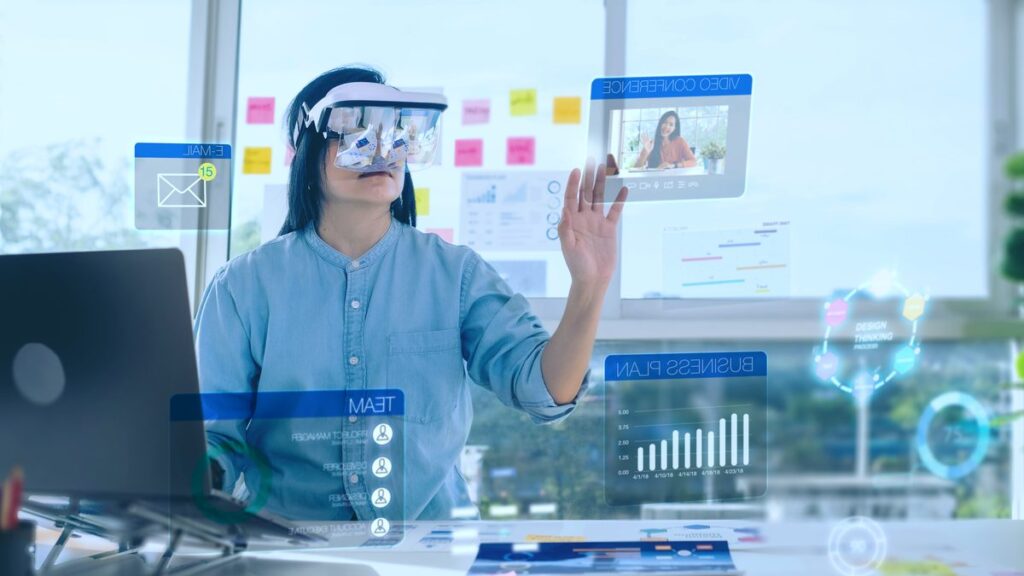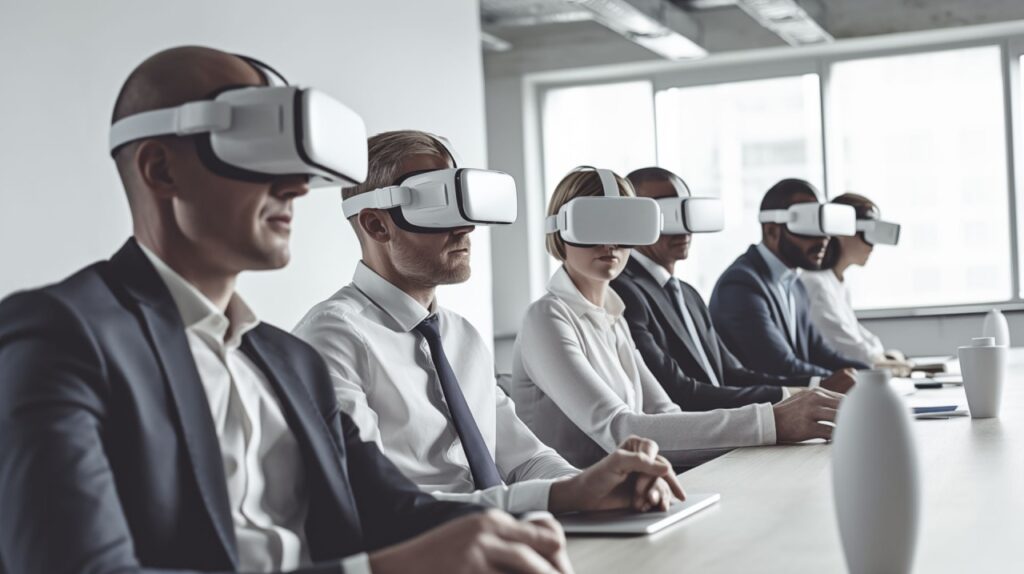
Organizations are growing increasingly dependent on new technology to improve their leadership development programs in today’s fast-changing digital age. Among all of these technologies, Virtual Reality (VR) stands out as an essential instrument that has the potential to change how leaders are educated and developed. This blog explores the significance of virtual reality in the development of leadership, focusing on its advantages, applications and potential for the future.
Understanding Virtual Reality in Leadership Development
The use of virtual reality is an immersive experience that can be easily accessed via a VR headset, engaging users in a 3D world in which they may interact with objects and settings as if they were real. While virtual reality (VR) has usually been linked with gaming and other forms of entertainment, its applications have spread to other fields such as healthcare, education, and corporate training.
In the overall setting of leadership growth and development, using virtual reality offers an exceptional opportunity to develop comprehensive and realistic settings in which developing leaders may practice and enhance their talents. These types of situations can vary from dealing with emergencies to team building, providing individuals the opportunity to participate in and respond to circumstances that they might come across in their professional lives.
Benefits of Virtual Reality in Leadership Development

1. Immersive Learning Experience
One of the most important benefits of implementing the use of virtual reality in the development of leadership is the comprehensive learning experience it provides. Traditional methods of training, such as classroom-based instruction or online courses, sometimes fail to capture the complex issues and pressures of real-world leadership situations. Virtual Reality (VR) on the other hand, enables participants to completely occupy themselves in realistic situations and practice decision-making, interaction, and problem-solving abilities in an environment that is monitored.
2. Safe Environment for Practice
Making challenging decisions, frequently under pressure, is part of being a leader. VR offers an atmosphere of safety in which individuals can experiment with evaluating these decisions without being afraid of consequences in real life. Leaders may try out alternative strategies, gain insight into their failures, and get immediate feedback in a VR simulation. This cyclical method promotes learning while also developing the adaptability required for effective leadership.
3. Personalization and Adaptability
VR enables highly personalized and flexible training experiences. Each person can participate in situations that have been tailored according to their individual requirements, abilities, and opportunities for progress. This level of personalization guarantees that advancement in leadership programs is appropriate and efficient for each individual.
Furthermore, virtual reality experiences may be changed in real time in response to the performance of participants. If an individual is having difficulty with one particular aspect of the modelling, such as keeping ease under pressure, the simulation might be adjusted to give further experience in that area. Because of its adaptability, virtual reality (VR) is an excellent tool for tackling the specific difficulties that each leader encounters.
4. Enhanced Engagement and Retention
Especially in long-term or complicated leadership programs, traditional training techniques frequently fail to keep individuals engaged. virtual reality (VR) has been shown to considerably enhance engagement and knowledge retention because of its realistic and interactive capabilities.
Studies indicate that individuals who take an interest in the process of learning are more likely to remember the information they are learning. This is made possible by a technology called virtual reality, which enables users to “learn by doing” as opposed to just passively taking in knowledge. Consequently, leaders who receive VR-based training have a higher chance of holding onto the knowledge and skills they learn, which improves long-term results.
Applications of Virtual Reality in Leadership Development

1. Crisis Management Simulations
Crisis management scenarios are among the most effective ways that virtual reality is being used in the development of leadership. These role-playing exercises put professionals in demanding scenarios wherein they have to handle complex challenges like an unexpected decline in the marketplace or a dispute within themselves. Leaders may practice delivering prompt, well-informed judgments as well as effectively interacting with their teams by modelling these types of situations.
2. Cross-Cultural Leadership Training
Leaders frequently have to deal with teams from various cultural and geographic backgrounds in the modern international corporate environment. VR may be used to imitate relationships between cultures, giving leaders the opportunity to experience establishing collaborative environments and negotiating cultural barriers.
Managing a multicultural workforce with people who have various cultural origins could potentially be a part of a virtual reality simulation. Building trust and encouraging collaboration among team members are among the tasks that the leader has to accomplish. The development of the cultural awareness needed to achieve effective leadership across borders is facilitated by this kind of training.
3. Emotional Intelligence Development
A vital ability for effective managerial skills is emotional intelligence (EI). By engaging leaders in situations that require them to control both their own and other people’s feelings, virtual reality (VR) may be utilized to promote emotional intelligence (EI). This could involve managing team relationships, having difficulty communicating with or giving constructive feedback.
Future Prospects of Virtual Reality in Leadership Development

Applications of virtual reality (VR) in leadership development are expected to continue to evolve as the technology develops further. More advanced simulations with increasingly higher degrees of reality and interaction are something we should expect. Furthermore, more customized and adaptable training experiences might be made possible by developments in AI and machine learning, which would increase the usefulness of VR in leadership development.
Furthermore, as businesses adopt remote work and virtual collaboration; virtual reality (VR) may become increasingly important in preparing executives to lead teams with different locations. Virtual reality (VR) may assist leaders in acquiring the competencies required to succeed in a society that prioritizes technology by modelling remote project management, virtual team meetings, and other aspects of virtual leadership.
Conclusion
With its ability to provide engaging, customized, and compelling training experiences, the use of virtual reality holds the potential to completely transform the area of leadership development. Virtual reality presents an exceptional opportunity for leaders to further develop their abilities in a secure setting, covering everything from handling emergency situations to cross-cultural leadership. We could predict that virtual reality will become more significant in training the leaders of the future as technology develops. Businesses that make investments in VR-based programs for leadership development will have the capabilities necessary to succeed over the long run and successfully negotiate the complex requirements of the modern business environment.

